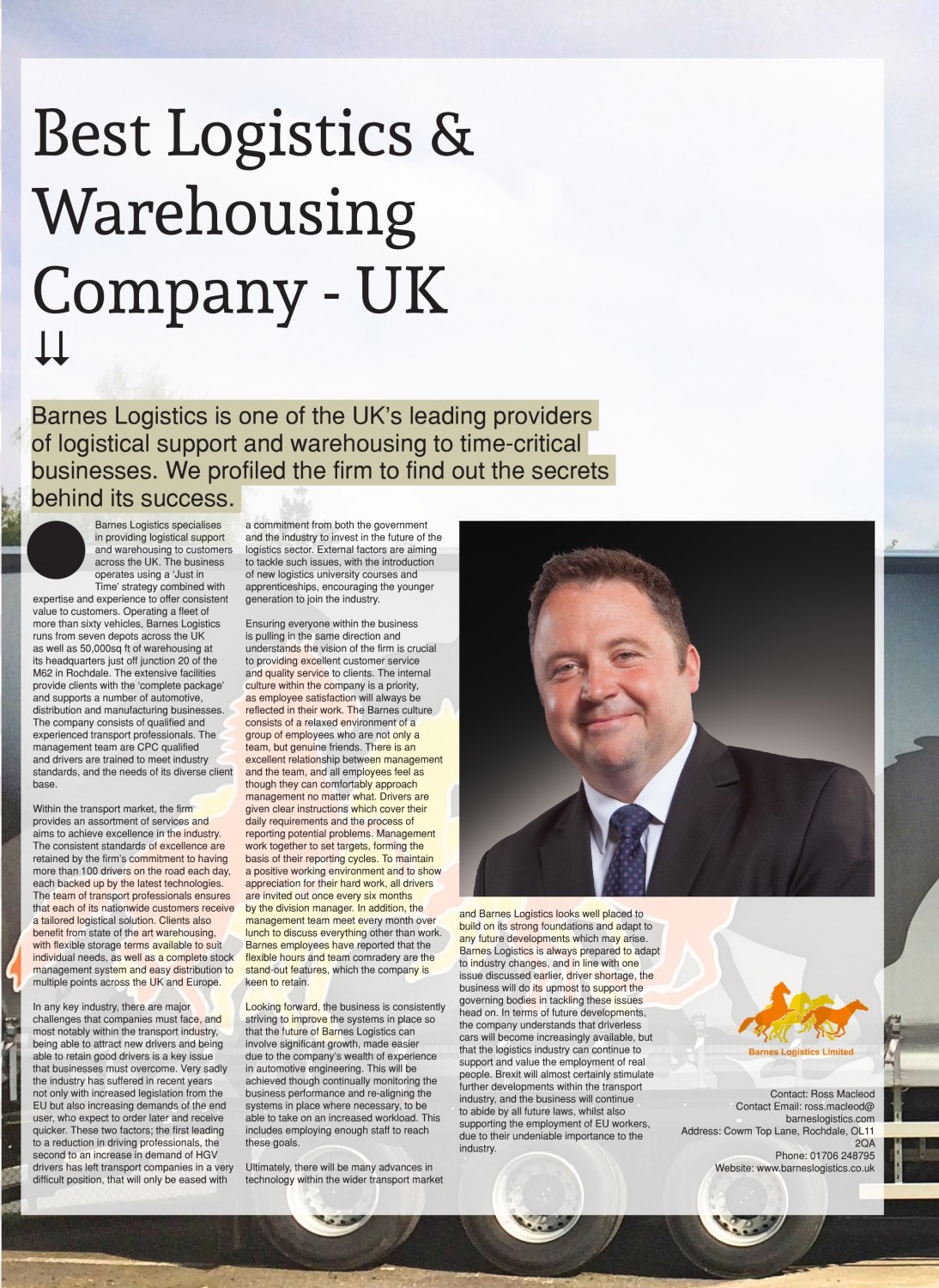Are We Still in the Driver’s Seat when it comes to Autonomous Vehicles?
When it comes to the subject of self-driving vehicles, the conversation is often a heated one. Regular debates are held between those who work in the transport sector, discussing whether autonomous vehicles will have a positive or negative impact upon the logistics industry; a conversation which is to be continued within the following paragraphs.
Whilst self-driving cars are a somewhat common news piece, self-driving trucks have not been featured as frequently. However, with the Government announcing this week the trial of semi-autonomous lorries, and a date for these plans now announced, our news feeds have been inundated with the details surrounding such an operation, and so, at Barnes Logistics, we felt the need to delve further into this topic.
Previously, and arguably unsurprisingly, plans to test autonomous HGVs had been suspended after a lack of commitment from many major European manufacturers. Their concern was not without valid cause; is platooning and synchronised braking really the safest addition to our roads? But, despite the initial reluctance from manufacturers, the Government has since revealed plans to trial the feasibility of autonomous HGVs on Britain’s roads.
By 2025, sales of driverless cars are anticipated to hit record highs; it is predicted that global sales will exceed 10m. With such high expectations of self-driving cars, it is interesting to consider whether autonomous trucks will boast a similar success. At Barnes Logistics, we have been scrutinising the issues which surround driverless vehicles, and how such potential complications may effect the logistics industry, presenting a vital question: are they a help or a hindrance?
Before assuming the overall safety of these vehicles however, there are many significant factors to take into consideration. This includes how the environment may be affected, (which in its own right is a topic of concern and has been discussed at length in our recent blog on vehicles and pollution), whilst other factors that will undoubtedly effect the success of driverless trucks include weather conditions and unforeseeable, and unpreventable road events, such as sudden accidents.
Firstly, we explore how driverless trucks would operate. The Government proposes to implement a ‘platooning’ technique, whereby the trucks drive in groups, just 4 metres apart from one another, with synchronised breaking and steering. Then, as a lorry needs to exit the motorway, a driver will take over control again, whilst the remaining HGVs continue to synchronise. It is thought to be a ‘state-of-the-art’ system, driven by smart technology. It is considered to improve road safety through reducing driving reaction time to zero seconds, providing an immediate reaction to potential trouble on the road. The Government also reports that the system is an inexpensive alternative to current HGVs, as the constant speed at which the trucks drive lowers fuel consumption and C02 emissions.
However, despite the apparent advantages, in cost reduction and fuel efficiency, there are many potential problems that driverless trucks could cause the logistics industry. The Financial Times has raised a series of issues which may prove problematic. Of upmost importance is the potential for accidents: whilst road safety is considered to be improved through the use of quicker reaction times, it should be noted that often, accidents can be prevented through simple communication between vehicles and pedestrians. Decisions at cross roads are often made through one driver letting another pull out first, and pedestrians are able to cross roads after being waved across by drivers. Human interaction on the road is a complex system which no computer can replicate.
Additionally, there is the safety risk that HGV platoons pose to other road users without taking any HGV accidents into consideration. The driverless technology will allow the lorries to travel far closer together – and although this will increase efficiency due to lower air resistance, it also means that road signs may be blocked from view for car drivers. Road-side warnings advise of upcoming traffic jams, accidents and adverse weather conditions – if car drivers cannot see these due to being blocked by a small convoy of lorries, the end results could be disastrous.
Finally, one of the most significant potential problems for the sector, is of course, the issue of employment. The logistics industry provides vital jobs for thousands looking for an occupation with flexibility and freedom. Although each HGV in a platoon will have a driver at the wheel ready to take over, will the idea of simply sitting behind semi-autonomous vehicles deter potential new young drivers from the industry? In a sector which is attempting to encourage more interest from the next generation into the driving occupation, this news does not bode well.
Overall, it is difficult to predict how successfully driverless trucks will integrate into logistics. For all the benefits they offer, we believe that there is the potential for many mistakes, which could prove costly and (potentially) lethal. HGVs have been human operated since they joined our roads, and naturally, this allows for a significant level of control over technology. Along with the potential for devastation and uncertainty for professional drivers, it seems to be a backwards step for logistics.







